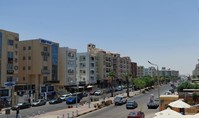
Building-Violations-In-Hurghada
Building violations refer to construction activities or modifications carried out without obtaining the required legal permits, or in violation of approved building codes and regulations.
1. What Are Building Violations?
Building violations refer to construction activities or modifications carried out without obtaining the required legal permits, or in violation of approved building codes and regulations. These violations may include:
-
Building on agricultural or state-owned land without legal authorization.
-
Exceeding the permitted number of floors or built-up area.
-
Changing the use of a building (e.g., from residential to commercial or touristic) without proper licensing.
2. The Situation in Hurghada
Hurghada, being one of Egypt’s most prominent tourist cities, has experienced rapid urban growth over the past years. This growth has led to a notable rise in building violations. The most common violations in the city include:
-
Constructing buildings without official permits in newly developed neighborhoods.
-
Encroachment by hotels and resorts on public beachfront areas.
-
Establishing unauthorized residential units in areas lacking adequate infrastructure.
-
Constructing residential units on rooftops (roofs) without permits, which violates building regulations and may result in serious structural safety issues, especially in the absence of proper engineering supervision and safety standards.
3. Government Measures to Combat Building Violations
The Egyptian government, through the Red Sea Governorate and local authorities, has implemented strict measures to address the issue, including:
-
Immediate Demolition Campaigns: Local authorities conduct regular campaigns to promptly remove unlicensed constructions.
-
Reconciliation Law Implementation: In certain cases, a reconciliation process is allowed under specific conditions, especially if the building is structurally sound.
-
Use of Technology: Geographic Information Systems (GIS) and aerial monitoring are being used to detect violations and act quickly.
-
Stricter Penalties: Legal penalties have been intensified against contractors and individuals responsible for violations.
4. Consequences of Building Violations
Building violations have multiple negative impacts, such as:
-
Strain on Infrastructure: Overloaded water, sewage, and electricity systems result in poor public services.
-
Distortion of Urban Aesthetics: Violations damage the city’s image, particularly affecting tourism appeal.
-
Structural Risks: Unlicensed construction without professional oversight increases the risk of building collapse.
-
Waste of Public Resources: Government time and funds are spent on demolition and damage control.
5. Recommendations to Limit Violations
-
Enhance public awareness of the legal and safety importance of adhering to building laws.
-
Streamline procedures for obtaining legal construction permits.
-
Encourage community monitoring and reporting of violations.
-
Promote regulated and compliant real estate development.
Recent Posts















